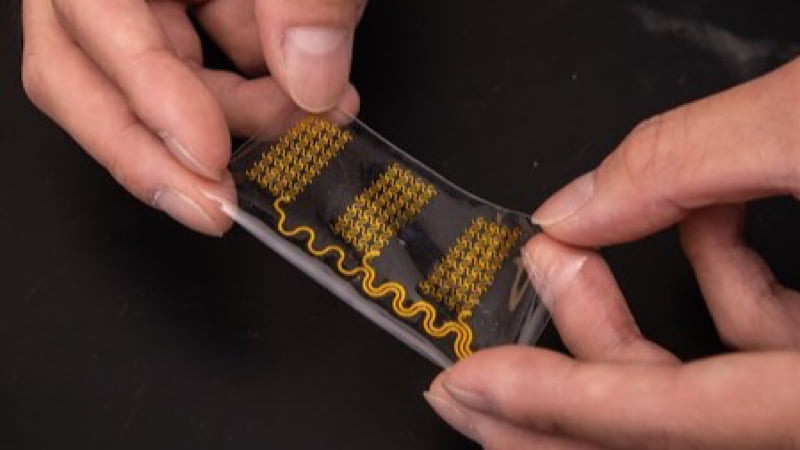
Scientists from the California Institute of Technology (Caltech) have developed a robot skin that can independently detect explosives, viruses and neurotoxins. In the future, the system could help, among other things, with environmental protection and support the monitoring of health and public safety.
Robots and artificial intelligence (AI) already relieve us of many tasks in everyday life. Machines often master repetitive motion sequences better than humans. This is one of the reasons why robots could completely take over some jobs in the coming years. However, some aspects are not yet mastered by the technology.
Robot skin can detect explosives, viruses, and neurotoxins
The robot recognizes nerve toxins, the explosive TNT and various viruses through its skin. Built-in electronic sensors interpret the environment and send the results to a computer unit. Within three minutes it is apparently clear what kind of substance is involved and whether it is dangerous.
The areas of application are diverse. The robot could identify dangers to our health or be used to avert danger. There is also potential for environmental protection, because exposed to nature, the sensors can identify the origin of chemicals, for example.
Human can control machine remotely through artificial skin
If a human puts on the robot skin, he can even control the robot’s hand. For this purpose, the electrical impulses of the muscles are recorded and interpreted by an artificial intelligence. The robotic arm then performs the desired movements with minimal delay.
To ensure that the technology spreads quickly, the researchers pay particular attention to the production costs. Special printers apply the sensors to the surface using special ink. The lines consist of silver nanowires and are said to have a particularly high level of stability. So we may soon see the scanning robotic arm in practice.
Also interesting:
Source: https://www.basicthinking.de/blog/2022/06/14/roboter-kunsthaut/


